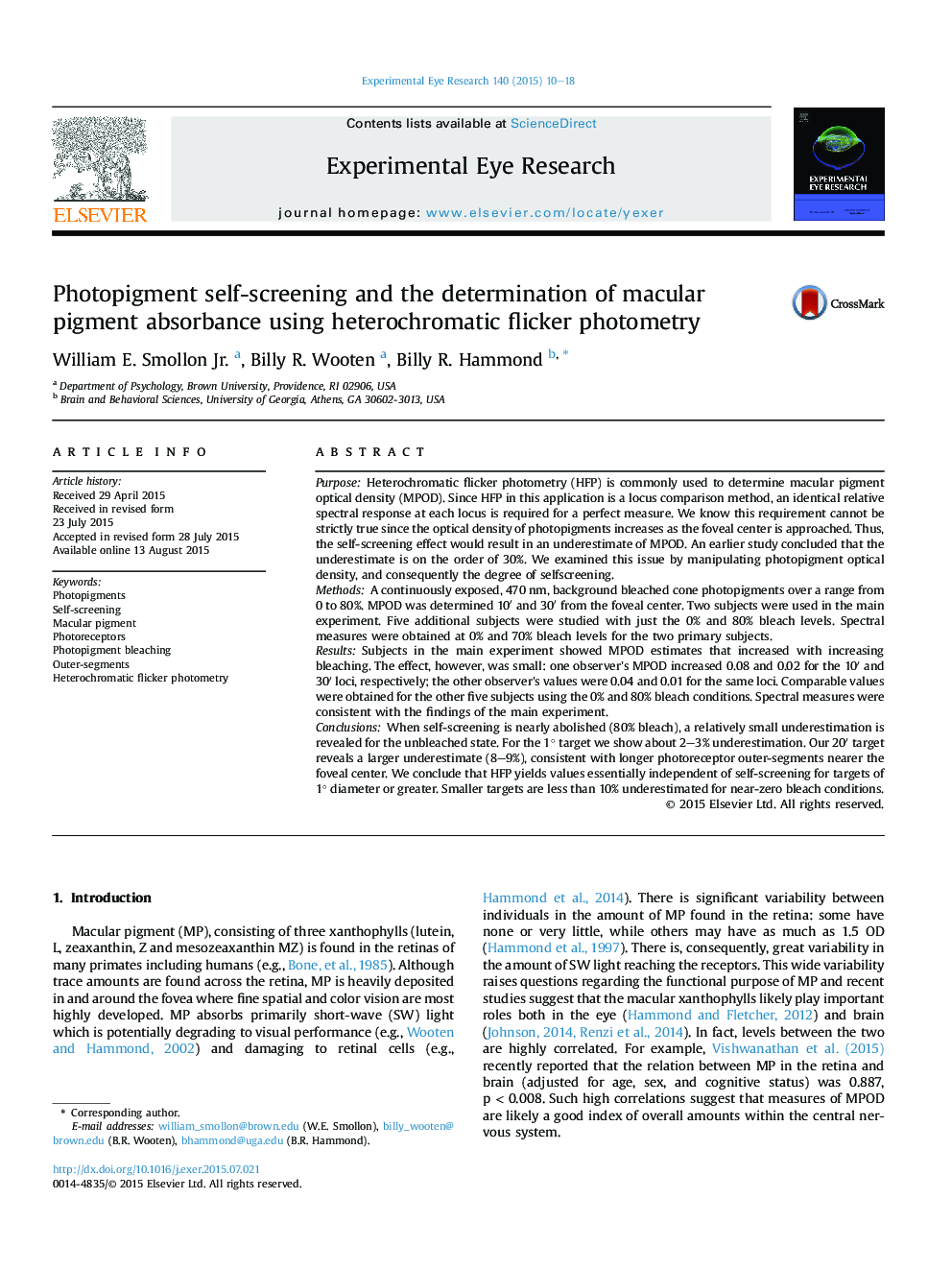| کد مقاله | کد نشریه | سال انتشار | مقاله انگلیسی | نسخه تمام متن |
|---|---|---|---|---|
| 6196381 | 1602582 | 2015 | 9 صفحه PDF | دانلود رایگان |

- Macular pigment (MP) measurements are often based on comparisons across retinal sites.
- Such methods assume univariance (only MP differs).
- One violation of this assumption is based on photopigment self-screening (SS).
- Differences in SS have been predicted to cause underestimates in MP as large as 30%.
- Our results indicate that the underestimation is much smaller (2-3%).
PurposeHeterochromatic flicker photometry (HFP) is commonly used to determine macular pigment optical density (MPOD). Since HFP in this application is a locus comparison method, an identical relative spectral response at each locus is required for a perfect measure. We know this requirement cannot be strictly true since the optical density of photopigments increases as the foveal center is approached. Thus, the self-screening effect would result in an underestimate of MPOD. An earlier study concluded that the underestimate is on the order of 30%. We examined this issue by manipulating photopigment optical density, and consequently the degree of selfscreening.MethodsA continuously exposed, 470 nm, background bleached cone photopigments over a range from 0 to 80%. MPOD was determined 10Ⲡand 30Ⲡfrom the foveal center. Two subjects were used in the main experiment. Five additional subjects were studied with just the 0% and 80% bleach levels. Spectral measures were obtained at 0% and 70% bleach levels for the two primary subjects.ResultsSubjects in the main experiment showed MPOD estimates that increased with increasing bleaching. The effect, however, was small: one observer's MPOD increased 0.08 and 0.02 for the 10Ⲡand 30Ⲡloci, respectively; the other observer's values were 0.04 and 0.01 for the same loci. Comparable values were obtained for the other five subjects using the 0% and 80% bleach conditions. Spectral measures were consistent with the findings of the main experiment.ConclusionsWhen self-screening is nearly abolished (80% bleach), a relatively small underestimation is revealed for the unbleached state. For the 1° target we show about 2-3% underestimation. Our 20Ⲡtarget reveals a larger underestimate (8-9%), consistent with longer photoreceptor outer-segments nearer the foveal center. We conclude that HFP yields values essentially independent of self-screening for targets of 1° diameter or greater. Smaller targets are less than 10% underestimated for near-zero bleach conditions.
83
Journal: Experimental Eye Research - Volume 140, November 2015, Pages 10-18